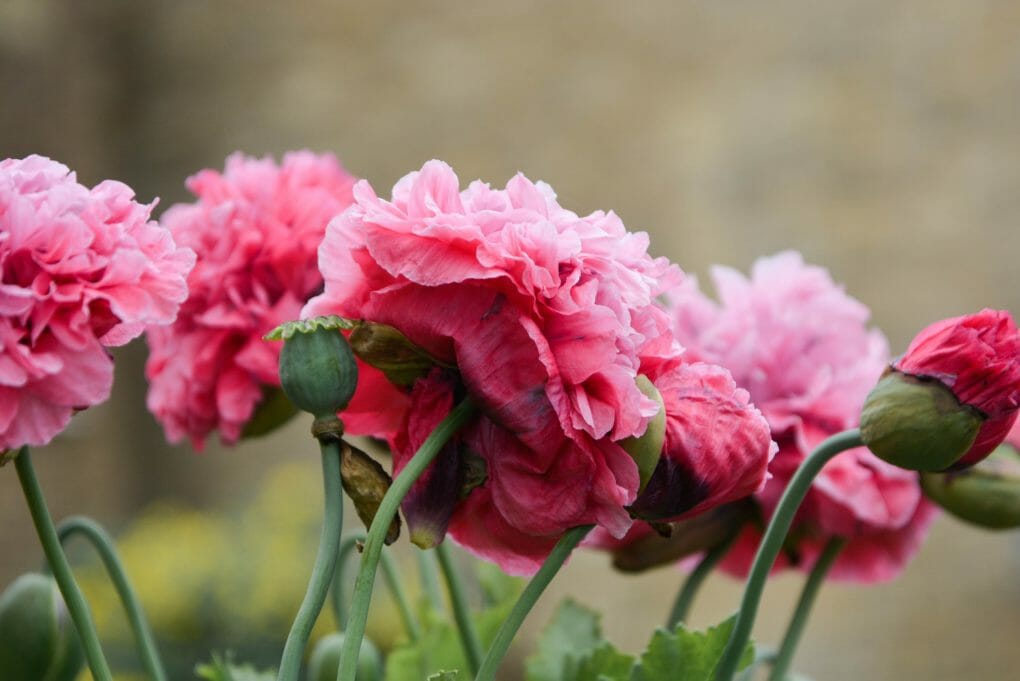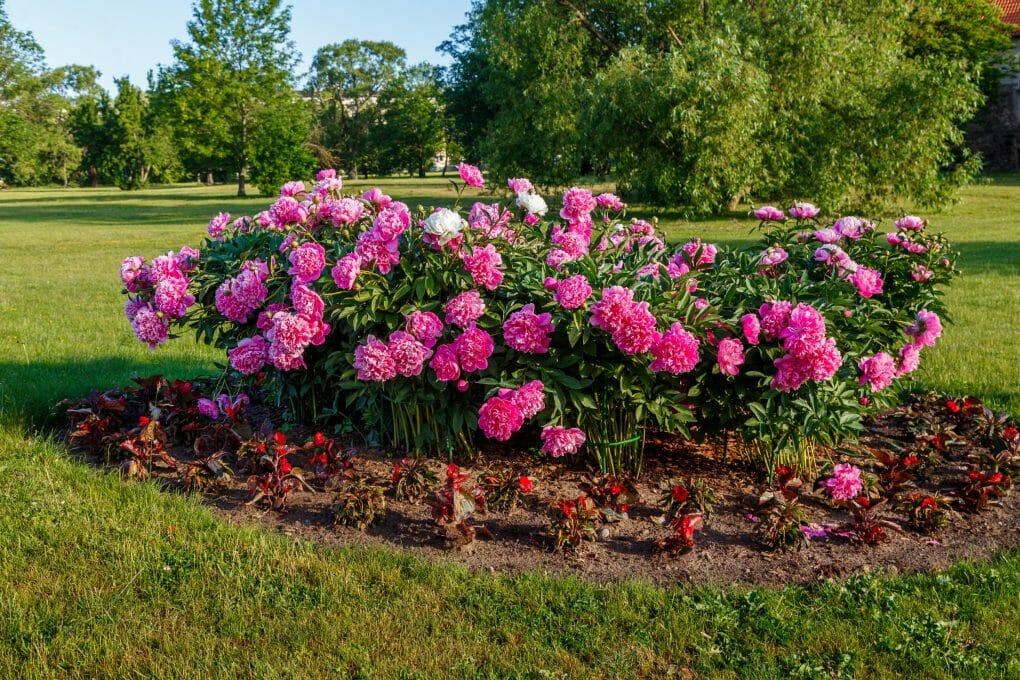Peony Spacing in the Garden: Guidelines in Growing Healthy Peonies
Peony spacing refers to the distance between plants in a garden or container. This is typically done to accommodate differences in watering needs and sun exposure. When planting peonies, it’s important to space them at least 2-3 feet apart so they have plenty of room to grow and adequate air circulation. If you live in a hot climate, try increasing the separation by up to 4 feet. If you live in a cold climate, decrease the spacing by up to 2 feet. The development of the disease can be facilitated by stagnant, humid air.
Table of Contents
3 Guidelines for Growing Flawless Peonies
Don’t Go Too Far from Digging
Less than 2.5 cm below the surface is the maximum depth at which the tuberous roots may be buried. There may be better ideas than digging deep into planting peonies if you’re looking to achieve a successful outcome. Your peonies will not flower if they are planted way deeper. They will produce fine foliage but no blooms.

Provide Fertile, Draining Soil
When it comes to growing peonies, you will need fertile and draining soil. Fertile soil contains high levels of organic matter, which is vital for the growth of plants. This type of soil also retains water well and helps to prevent weeds from taking over your garden.
Drainage is essential if you want your flowers to look their best. Wetting down the surface daily or two with a gentle spray will help keep moisture in the ground and promote root development. In addition, adding compost or other organic materials can help improve drainage even further. It’s important to note that too much wetness can cause roots to rot, so be sure not to overwater! If all goes according to plan, you should have splendid-looking peonies in no time.
For a soil drainage test, dig a hole one foot (0.3 meters) deep and fill it with water. A second time should be added after it has finished draining. If you want to calculate the hourly drainage, measure the drainage after an hour or fifteen minutes and multiply the measurement by four. Peony-friendly well-draining soil should drain at a rate of 1.5 to 6 inches (2.5 to 15 cm) per hour.
Dig an equally wide hole 12–18 inches (30–46 centimeters) deep if your soil needs enhancing. Although a hole this deep is not necessary to plant peonies, it is advised unless your flowerbed is already filled to this depth with rich soil to prepare the soil for the deep peony roots that will grow after planting. A gap at least 18 inches wide. For the same reason, it is advised to use (46 cm) across. If your soil has at least 18 inches, is rich, well-draining, and (46 cm) deep.
Add Fertilizer and Soil Amendments
You can fill the hole with 1/4 cup (60 mL) of balanced (10-10-10) fertilizer to hasten the growth of the peony. Some gardeners mix 12 cups (120 mL) of bone meal or superphosphate for added nutrients. If a pH test indicates that your soil is acidic (below 6.0), you should add some lime to balance it.
Plant in Sunny Area
Consider planting your peonies in a sunny area for the best results. Sunlight is key for plant growth. Planting peonies in a sunny area will help to ensure that they get the most sunlight and nutrients possible. This will encourage them to grow larger and produce more flowers. Pick a spot that gets six to eight hours of sunlight per day.
If you live in an area that doesn’t get much direct sunlight (for instance, near a busy street), it may be best to grow your peonies indoors under artificial light. This will still allow them to receive some indirect sunlight while flowering. However, more than this will be needed for optimal growth and development.
Know the Ideal Time to Plant Peonies
The ideal time to plant peonies may vary depending on the location and climate, but generally, they can be planted in late fall or early spring. It is also important to note that you should water your peonies regularly while growing, as this will help them yield a plentiful crop of flowers.

In the early spring, the soil is still cool but has warmed up enough so plants can start growing. This will allow them to establish strong roots and produce fresh flowers throughout summer and fall.
Avoid Areas That Have Previously Been Planted With Peonies
In areas where other peonies have previously been grown, peonies may experience issues. Decreased soil nutrients may cause this. There is a chance that areas previously planted with peonies may be infected with the mite, which can cause significant damage to the plant. As a result, avoiding these areas is important if you plan to plant peonies shortly. If you decide to plant them, be sure to use appropriate protective measures, such as treating the soil before planting or using foliar feeding products that contain anti-poison agents.
Ensure Protection From Strong Winds
When planting peonies, it is important to ensure they are protected from strong winds. This will help keep the flowers safe and upright during their growth stage. You can use windscreens or cages to protect your plants, or you can plant them in a location that is sheltered from the wind. Tree peonies are particularly at risk because they develop into tiny shrubs that can break in the wind if your region experiences unusually strong winds.
A large tree can also act as cover. However, it must be placed at least 10 feet (3 meters) from the peony so its roots won’t compete with them for space.
Watering Tips
Follow the instructions that are included with your peony plant. Depending on the variety and stage of growth, peonies may need water differently. It is important to check the soil surface every day to see if there has been a significant change in moisture levels. If needed, add enough water to maintain moist soil throughout the root zone without allowing it to become wet or boggy.
Identify What Type Of Peony You Have
Choose the correct type of peony for your area zone. Herbaceous peonies and tree peonies are the two types of peonies. Herbaceous peonies are typically sold as root clumps that develop into flowers with green stems that resemble herbs. Typically, tree peonies develop into woody-stemmed shrubs with wooden stems joined to the root clump. To combine the best traits of two tree peony varieties, tree peonies have been grafted onto one another, giving them a ridged bulge on the root and a different bark texture. You can plant either variety according to these directions, but be ready for them to require different planting depths:
When the top bud is buried two inches deep, herbaceous peonies can grow (5 cm). The graft should be planted 4-6 inches deep for the best growth of tree peonies.
